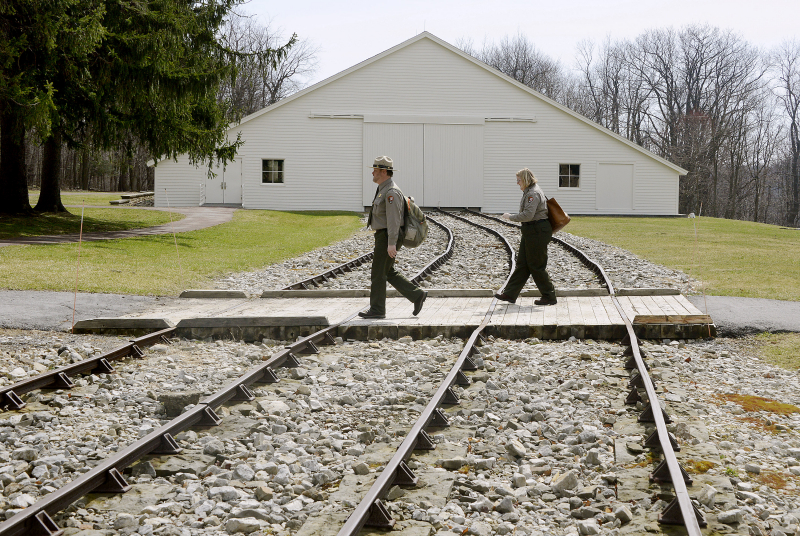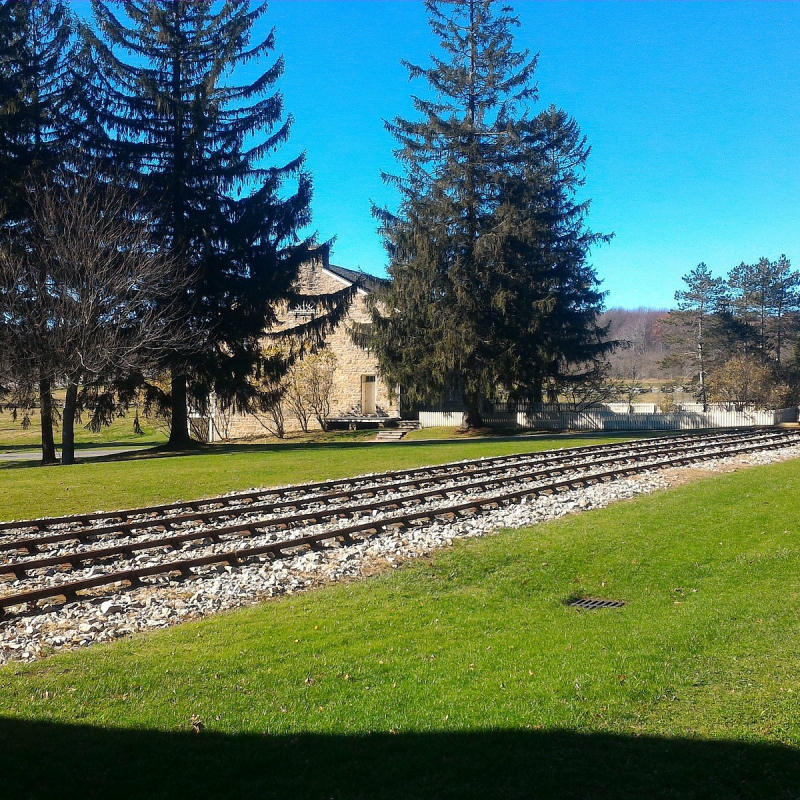Allegheny Portage Railroad National Historic Site
The Allegheny Portage Railroad was the first railroad built across the Allegheny Mountains in central Pennsylvania, United States, and it served as the first transportation infrastructure connecting the midwest to the eastern seaboard across the Allegheny Front barrier range from 1834 to 1854. The system was primarily utilized as a portage railway, moving riverboats and barges across the difference between the Ohio and Susquehanna Rivers. It was approximately 36 miles (58 kilometers) long total, with both ends connected to the Pennsylvania Canal. The Allegheny Portage Railroad National Historic Site, managed by the National Park Service, now houses the railroad's ruins.
The railroad used carefully built wheeled barges to travel on a narrow-gauge rail track, elevating the vehicles with steam-powered stationary motors. The railroad's roadbed did not incline steadily upwards but rose in relatively long, saw-toothed stretches of slightly sloped flat terrain suitable for animal-powered towing, interspersed with steep cable railway inclined planes powered by static steam engines, similar to modern ski lift mechanisms.
Near the historic line, the park service runs a visitor center with educational exhibits. The Samuel Lemon House, a bar along the railroad in Cresson that was a popular stop for railroad travelers, is nearby; the National Park Service has transformed it into a historical museum. A section of repaired track, an engine house with exhibitions, a picnic area, and hiking paths are also maintained.












